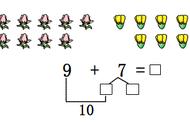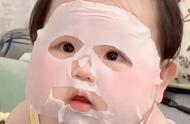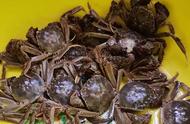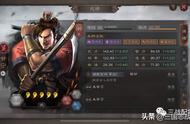
编者按:

新春将至
今年的团圆饭安排上了没?
享受饕餮盛宴之余
也要记得为头脑补充营养哦!
快来和《英语学习》一起学习
用英语
介绍春节文化吧!
本期《英语学习》摘录了程晓堂教授、张祖春研究员共同主编,湖北教育出版社出版的《学英语 讲中国故事》选篇。第一篇选自“传统节日篇”,介绍了关于春节的起源传说、庆祝活动、相关习俗的知识;第二篇选自“饮食文化篇”,介绍了中国的就餐礼仪、座次安排和餐盘转桌等相关知识。
这道“春节特供”文章不仅有丰富详实的历史文化知识,还有超级实用的英文祝福语和地道表达,记得收藏哦~

The Spring Festival
春节
The Chinese New Year is now popularly known as the Spring Festival because it starts from the beginning of spring. It is one of the important traditional festivals celebrated by the Han people and many of the ethnic minorities of China on the first day of the first lunar[1] month. According to the Han custom, the festival usually lasts from the eighth of the twelfth lunar month of the old year up to the fifteenth of the first lunar month of the new year.
Its origin is too early to be traced. Several explanations are available. Some believe, however, that the word Nian(年), which in modern Chinese means “year”, is originally the name of a monstrous beast that started to eat people the night before the beginning of a new year.
Legends
One legend goes that the beast Nian, with a very big mouth, was extremely fierce, which made people scared. But people found that the red color and the noise of firecrackers would scare away Nian. So people chose to put up red paper decorations on their windows and doors at the end of each year to scare away Nian in case it came back again. From then on, the tradition of observing the conquer of Nian is carried on from generation to generation.
The term Guonian, which may mean “Survive the Nian”, means “Celebrate the (new) Year” today as the wordguo in Chinese means “pass-over” or “observe”. The custom of putting up red paper and setting off firecrackers to scare away Nian continues today.
Through thousands of years’ development, customs are spreading far and wide. Sweeping the dust is widely accepted as New Year cleaning. “Dust” shares the same sound with chen(陈) in Chinese, which means old and past. In this way, “sweeping the dust” before the Spring Festival means a thorough cleaning of houses to sweep away bad luck in the past year. This custom shows a good wish of putting away old things to welcome a new life.
After the house is thoroughly cleaned, some decorations follow. Putting up Spring Festival couplets (春联) is a very popular way of decorating house in China. It consists of two lines of Chinese characters on both sides of the door and one short line above the door. And all the lines convey the idea of good luck. In the past, the Chinese people usually wrote their own couplets with a brush or asked others to do it for themselves. Nowadays, it is common for people to buy the printed couplets in the market.
In addition to the Spring Festival couplets, it is common for the Chinese to put up paper-cuts and the character fu(福) on walls, doors and the windows around the house. Fu shows people’s longing for a good life. Do you still remember Fuwa—the Beijing Olympic mascots[2]? Some people even invert the characterfuto show that blessing has arrived because “inverted” is a homophone[3] for “arrive” in Chinese.

Activities
1. Waiting for the New Year
Throughout New Year’s Eve, all members of a family get together to enjoy themselves through various entertainments while all rooms are decorated by red candles and colorful lanterns. This custom is referred to as “waiting for the New Year”, an expression of a strong attachment to the old year and looking forward to the coming new year. However, now there are fewer and fewer people in cities who will stay up late to see New Year in.
2. Taking a family reunion feast[4]
As we know, the festive activities are various and colorful. Taking a family reunion feast is a symbol of a family reunion. Even those on business would hurry back for it.
Two typical foods on the menu are the New Year cake for the southerners and jiaozi for the northerners. Both foods symbolize luck, as the Chinese term for the New Year cake isniangao (年糕), which has the same sound as the Chinese expression meaning “senior”. The shape ofjiaozi is like ancient Chinese currency made of gold, so people eat them and wish for money and treasure. The tradition of havingjiaozi is very important during the Spring Festival. You cannot have a complete Spring Festival without havingjiaozi.
3. Watching the CCTV New Year’s Gala
You may wonder what the family members usually do while taking the family reunion feast.
The CCTV (China Central Television) New Year’s Gala in China ranks the first in the audience rating on the New Year’s Eve. The New Year’s Gala is a variety show held by CCTV since 1983. Every year since then on the lunar New Year’s Eve, the program begins at 8 p.m. and lasts five to six hours. It brings laughter to billions of people, creates many popular words and produces lots of TV phenomena. For over thirty years, its value has gone far beyond a variety show. It is an entertainment for the Chinese both at home and abroad.
4. Setting off firecrackers
The firecracker is a unique product in China. Setting off firecrackers is one of the most popular customs among the kids in the Spring Festival celebration.
In ancient China, the sound of burning bamboo tubes was used to scare away wild animals and evil spirits. With the invention of the gunpowder, “firecracker”, Also called bianpao(鞭炮), is used to develop a joyful atmosphere.
In the past few years, such an activity was completely or partially forbidden in big cities including Beijing due to fire and injury as well as air pollution caused by setting off firecrackers. However, some Chinese thought that a spring festival without firecrackers was not lively enough and in recent years, the ban was canceled again in some places. This shows that setting off firecrackers is a very important activity during the Spring Festival.
5. Paying a New Year’s Visit
Another custom popular in the Spring Festival is paying a New Year’s visit. On the first day of the Chinese lunar year, everybody puts on their best clothes and pays ceremonial calls on their relatives and friends, wishing them all the luck in the coming year. Juniors will greet seniors, wishing them health and longevity[5], while seniors will give juniors some Gift Money as a wish for their safety in the coming year. When friends meet, they will wish each other happiness and prosperity[6] with a big smile.
With the development of new technology, there is a change in the way of giving New Year’s greetings. In recent years, it has become a tendency for relatives and friends to send short messages on WeChat (微信) or QQ to greet each other during the Spring Festival. With best wishes, the warm greetings of text messages give a happy and joyful atmosphere of the Festival.
Temple Fair
Temple Fair (庙会), usually held outside temples, is a kind of folk custom in China. During the Spring Festival, Temple Fair is one of the most important activities, in which there are such performances as acrobatics[7] and martial arts[8], numerous kinds of local snacks and many kinds of things for everyday life. In recent years, the Temple Fair has become a place for people to appreciate the traditional art and experience the traditional life.
Festival Greetings
Happy Chinese New Year 恭贺新春
Everything Goes Well 吉祥如意
Wishing You Prosperity 恭喜发财
Surplus Year After Year 年年有余
Peace All Year Round 岁岁平安
Good Luck in the New Year 新春大吉
Notes
[1] lunar adj.阴历的[2]mascot n.吉祥物[3]homophone n.同音异形异义词[4]feast n.宴席[5]longevity n.长寿[6]prosperity n.繁荣;成功[7]acrobatic n.杂技[8]martial artsn.武术
Table Manners
餐桌礼仪
Chinese people have developed exquisite cuisines and regard food as an important part in daily life. The importance of food has even impacted aspects of the Chinese language. For example, people do not greet each other with “How are you?” but instead they ask, “Have you eaten?” This greeting is often given without a particular desire to know whether the person has eaten or not. What people mean is to know whether he or she is feeling quite well.
The Chinese have not only created countless ways of cooking, but also have invented chopsticks to eat with. The use of chopsticks is a must in the Chinese cuisine. It is important for you not only to use the chopsticks, but also to be aware of the correct use of them. Otherwise, you would be regarded as being impolite. Therefore, you must have at least a basic idea about the correct method of using the chopsticks in order to avoid embarrassment[1].
Many traditional table manners are still observed[2] today. It is better if the dinner table is round. Once everyone is seated, the food is served. The guests often wait for the host to invite them to begin. According to the Chinese table manners, there are many do’s and don’ts. Chinese people have spent thousands of years in developing these set of values for the society.
Do’s and Don’ts
就餐礼仪
Usually, the bowl of rice is held with the left hand and brought close to the mouth while the rice is lifted into the mouth with the chopsticks held in the right hand. One should not make any noise when chewing the food. While waiting for the next course, one should place the chopsticks neatly on the chopstick rest and avoid crossing them or putting them on the rice bowl.
Whenever attending a wedding ceremony, one should bring a present wrapped in colorful or reddish[3] gift wrap or cash in a red packet. When invited to a Chinese New Year’s party, one should dress cheerfully and bring New Year’s red packets for luck and good wishes.
When taking a drink of wine at a formal dinner, one must first toast[4] another dinner guest regardless of whether he or she responds[5] by drinking. If one is toasted and doesn’t wish to drink, he can simply touch his lips to the edge of the glass to show courtesy[6].
The spoon should not be used at the same time as the chopsticks. Also, toothpicks[7] should not be used during the meal but rather at the end, and always while covering the mouth. Also, one should neither point with his chopsticks nor stick his chopsticks upright into his rice bowl; leaving chopsticks standing up resembles[8] incensing[9] sticks set before a grave, thus it is considered disrespectful.
Seating Arrangement
座次安排
The way Chinese people are seated is also an interesting part of table manners and is a sign of respect in the Chinese culture. Therefore, it is better to leave the best place on the dining table for the elders. If a group of people are having meal, the most respected members are given the place at the head of the table while the rest take their seats accordingly.
Rotatable Tray
餐桌转盘
The rich culture of China is a matter of interest for many reasons. It has some very unique features which are quite unusual and surprising for foreigners. One of them is the rotatable tray[10], or Lazy Susan. It is a round rotating disc or tray in the center of the dining table. There are different materials to make the tray or the disc. However, the most commonly used are wood and glass. The idea behind the Lazy Susan is to ensure that all the participants have equal extent of accessibility[11] to the served dishes. Because of this, circular-shaped dining tables are popular in most places of China. The basic purpose of the rotatable tray is to make everybody realize that each one is honored. This is one of the signs of hospitality and equality.
Notes
[1] embarrassment n.尴尬[2]observe v.遵守;庆祝[3]reddish adj.微红的;略带红色的[4]toast v.向……祝酒;为……干杯[5]respond v.回答;作出反应[6]courtesy n.礼貌[7]toothpick n.牙签[8]resemble v.类似;像[9]incense v.向……焚香[10]tray n.托盘;文件盒[11]accessibility n.易接近;可亲
长按识别下方二维码
立即购买
《学英语 讲中国故事》系列丛书
当当购买
京东购买
编
后
记
从远古先民时期发展而来的中华传统节日,清晰地记录着中华民族丰富而多彩的社会生活文化内容,也积淀着博大精深的历史文化内涵。
希望这篇文章能帮助读者们更加全面地了解传统文化和传统礼仪,更能积累常用的英文表达,更好地用英语讲好中国故事、弘扬中华优秀传统文化。
新岁将至,《英语学习》编辑部祝每一位读者朋友平安喜乐、万事如意,在新的一年用“鼠”不尽的热情和朝气,收获“鼠”不尽的快乐和幸福!
新
春
快
乐
《英语学习》2020年新刊征订
English Language Learning

着眼实际问题,尊重基本规律,坚持朴素文风
注重基础学习,关注不同需求,推进数字进程
微店订阅
外研书店微信小店
¥ 12
购买单期
邮局订阅
中国邮政微商城
¥ 144
订阅全年

《英语学习》杂志唯一投稿方式
http://yyxi.cbpt.cnki.net/
《英语学习》杂志“教学前沿”栏目诚征稿件,本栏目着重关注具有创新性的教学设计、教学难点突破方式及教学策略集锦等,呈现形式为教学课例或教学研究等。
想了解更详细的
投稿须知及投稿步骤?
!特别提示!
我刊不以任何方式收取版面费、审稿费













